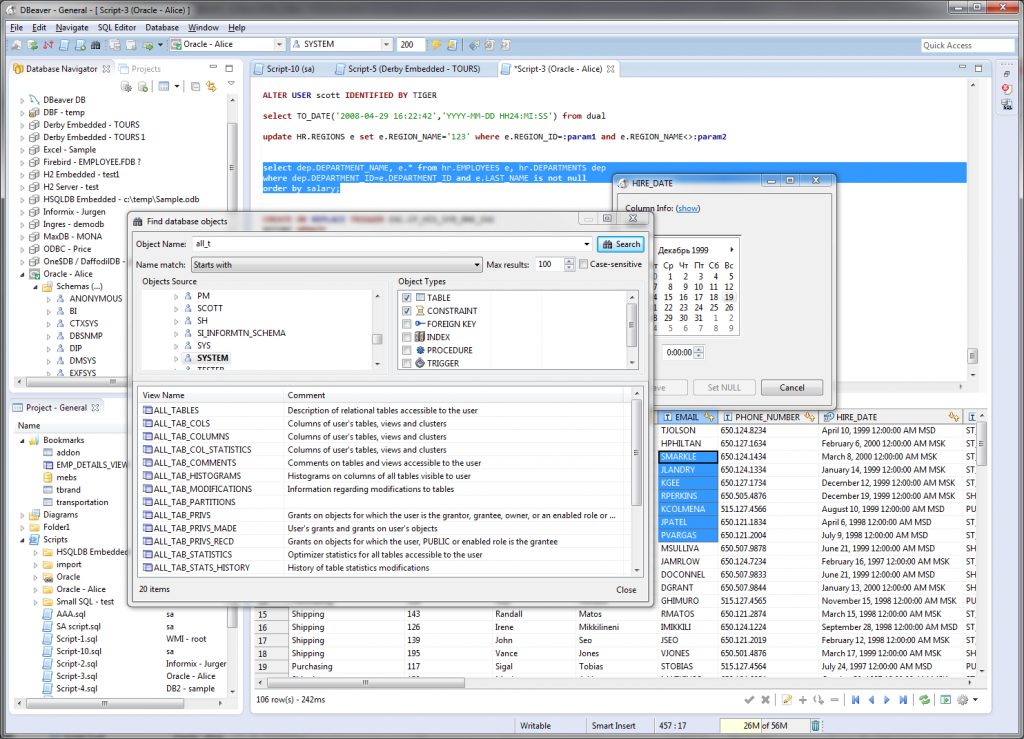


Last but not least, if you love dark mode or theme, you can switch to it. To open the SQL editor, right-click on the database name, then select SQL editor, then Open SQL script. Your new database connection should now appear under the Database Navigator as shown below. Now complete the database connection setup by clicking Finish as shown in the following screenshot. If the database connection settings are correct, you should see the database server details like so. Next, enter the database connection settings (database Host, Database name under Server settings, Username, and user’s Password under Authentication settings).
#Dbeaver install#
At this point, DBeaver will attempt to download and install the selected driver, ensuring that your computer is connected to the Internet.
#Dbeaver driver#
Create New Database Connectionįind your database driver from the list of databases as shown in the following screenshot.

To create a new database connection click on the highlighted button in the following screenshot or click Databases, then select New Database Connection. Once you have successfully installed DBeaver, search and open it from the system menu. $ sudo rpm -ivh dbeaver-ce-latest-stable.x86_64.rpm To install DBeaver via the DEB or RPM 64-bit package installer, download it, and install it using the appropriate package manager as follows.
#Dbeaver update#
$ sudo apt-get update & sudo apt-get install dbeaver-ceīesides, on Ubuntu and its derivatives including Linux Mint, Kubuntu, you can use the PPA repository to install and upgrade DBeaver as follows: $ sudo add-apt-repository ppa:serge-rider/dbeaver-ce $ echo "deb /" | sudo tee /etc/apt//dbeaver.list On Debian and its derivatives such as Ubuntu and numerous others, you can install and upgrade DBeaver from the official Debian repository by running the following commands: $ wget -O - | sudo apt-key add. Installing DBeaver Community Edition via a Package ManagerĭBeaver is also available as a 64-bit DEB or RPM package. $ sudo systemctl enable -now snapd.socket $ sudo apt update & sudo apt install snapd If you already have snapd installed, simply copy and run the command to install the dbeaver-ce: - On Ubuntu/Debian/Mint.
#Dbeaver how to#
The commands below show how to install snapd and DBeaver snap ( dbeaver-ce). To run snaps, your Linux system must have snapd installed.ĭBeaver has a snap which you can install as follows. Snaps are a cool and easy way to install and run applications on Linux operating systems because they ship with all the dependencies of an application. Installing DBeaver Community Edition via Snap Before we proceed, note that DBeaver requires Java 11 or higher to run, importantly, starting version 7.3.1 all DBeaver distributions include OpenJDK 11 bundle.

In this article, we shall show various ways to install DBeaver Community Edition on Linux systems.


 0 kommentar(er)
0 kommentar(er)
